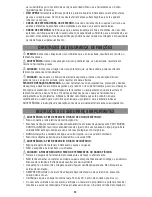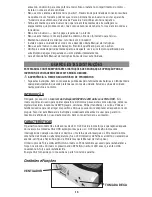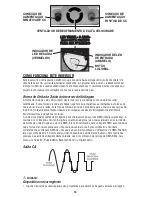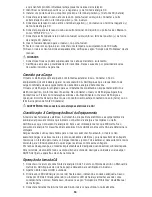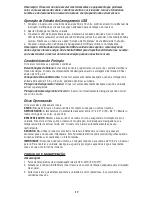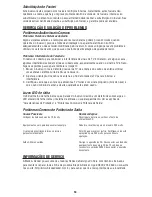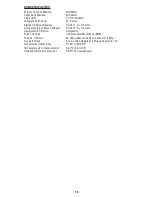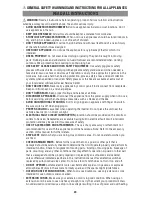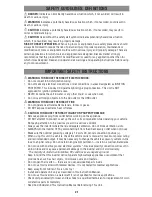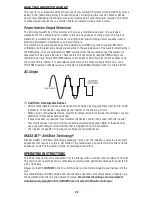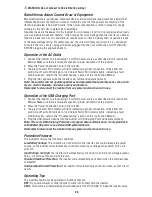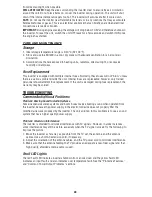
26
from direct sunlight, when possible.
WELL-VENTILATED:
Keep the area surrounding the inverter clear to ensure free air circulation
around the unit. Do not place items on or over the inverter during operation. The unit will shut
down if the internal temperature gets too hot. The inverter will auto-reset after it cools down.
SAFE:
Do not use the inverter near flammable materials or in any locations that may accumulate
flammable fumes or gases. This is an electrical appliance that can briefly spark when electrical
connections are made or broken.
IMPORTANT:
During engine cracking the voltage will drop below 10.5V and therefore shutdown
the inverter. To reset the unit, switch the unit OFF, leave for a few seconds and switch it ON once
the engine has started.
CARE AND MAINTENANCE
Storage
1. Ideal storage temperature range is 0-40°C (32-104°F).
2. Store and use the BDI200 in a cool, dry place with adequate ventilation for all-around air
circulation.
3. Avoid locations that are exposed to heating units, radiators, direct sunlight, or excessive
humidity or dampness.
Fuse Replacement
This inverter is equipped with multiple internal fuses. Normally, these fuses will not “blow” unless
there is a serious problem inside the unit. Internal fuses are replaceable; however, only trained
personnel should attempt fuse replacement. If the unit is damaged during fuse replacement, the
warranty may be voided.
TROUBLESHOOTING
Common Audio/Visual Problems
Problem: Buzzing Sound In Audio Systems
Some inexpensive stereo systems and boom boxes make a buzzing sound when operated from
the inverter, because the power supply in the electronic device does not properly filter the
modified sine wave produced by the inverter. The only solution to this problem is to use a sound
system that has a higher quality power supply.
Problem: Television Interference
The inverter is shielded to minimize interference with TV signals. However, in some instances,
some interference may still be visible, especially when the TV signal is weak. Try the following to
improve the picture:
1. Move the Inverter as far away as possible from the TV set, the antenna, and the antenna
cables. Use a short AC extension cord, if necessary.
2. Adjust the orientation of the antenna cables, and the TV power cord to minimize interference.
3. Make sure that the antenna feeding the TV provides an adequate (snow-free) signal and that
high quality, shielded antenna cable is used.
Fault LED Lights
The red Fault LED indicates inverter shutdown from an over-load and the yellow Fault LED
indicates an input fault, and also indicates over temperature fault. See the “Protective Features”
and “Common Power Output Problems” sections.

